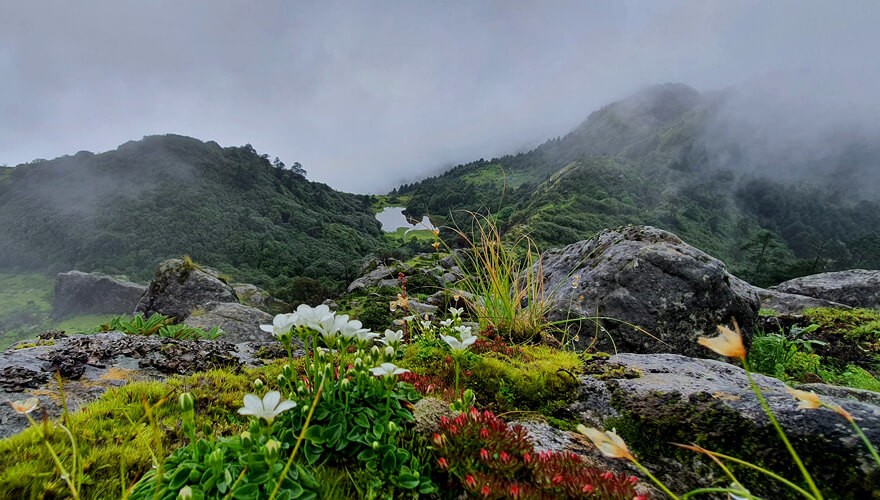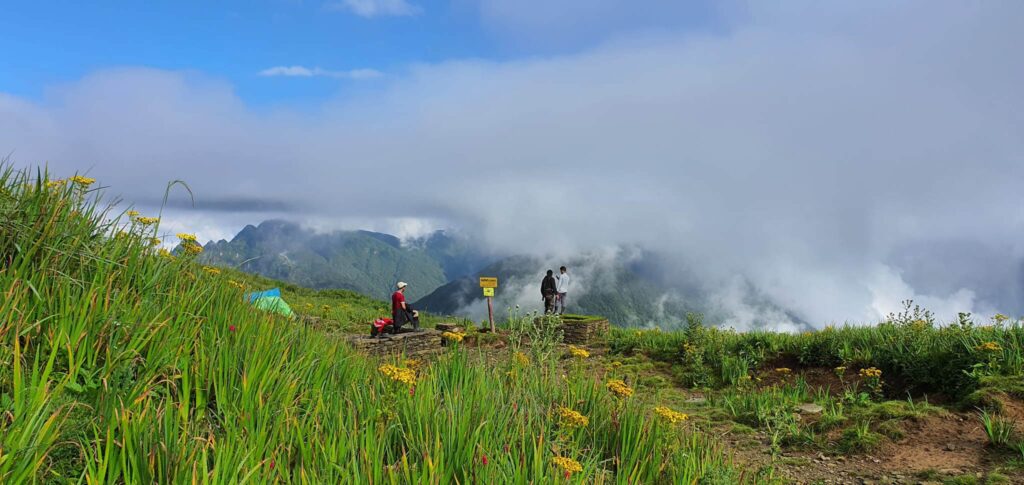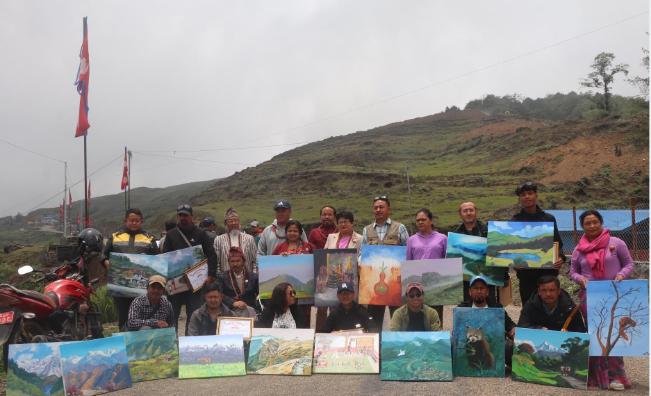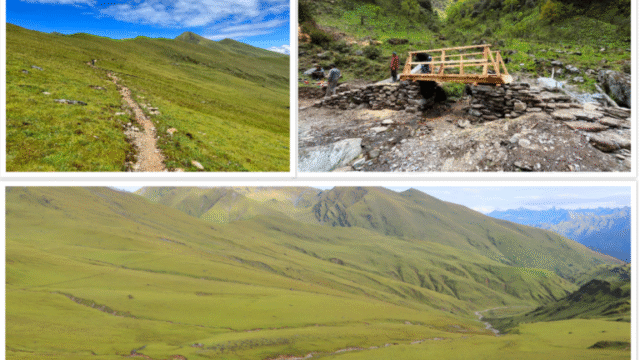In a significant effort to promote one of Nepal’s emerging trekking routes, twenty renowned national artists have brought the features and cultural essence of the Mundum Trail to life through their vibrant artworks. The three-day National Art Workshop, held in Temkemaiyung Rural Municipality, concluded on Wednesday with a promise to take the Mundum Trail to national and international audiences through visual storytelling.
Mundum Trail
The Mundum Trail, which stretches across the eastern hills of Nepal, has been officially listed by the Government of Nepal as one of the “100 must-visit tourist destinations.” This trail holds immense cultural and ecological value, weaving through settlements of the indigenous Kirant community and habitats rich with biodiversity. With a growing focus on sustainable and cultural tourism, the trail is gaining recognition for its potential to offer both spiritual and adventure experiences.
The workshop, held in the scenic surroundings of Temkemaiyung in Bhojpur district, brought together twenty artists from various parts of Nepal. Each of them painted themes reflecting the unique features of the Mundum Trail ranging from wildlife to ethnic heritage. Paintings featured the elusive Red Panda that inhabits the region, the cultural motifs of Tayama Khiyama deeply rooted in the Kirant community, depictions of Chindo a local symbolic element and traditional costumes worn by the indigenous people.

The event was inaugurated and supported by Temkemaiyung Rural Municipality. Its chairperson, Saroj Basnet, emphasized the importance of promoting the Mundum Trail as a holistic tourism experience that goes beyond trekking. “This art workshop was organized with the objective of developing, promoting, and publicizing the Mundum Trekking Route through painting,” he said. “We are also planning to establish this route as a centre for yoga and meditation in the near future.”
One of the highlights of the workshop was the emphasis on the preservation and celebration of indigenous identity. The artists immersed themselves in the local environment, observed daily life, interacted with the Kirant community, and translated their observations into meaningful works of art. These artworks are not only creative representations but also act as cultural documentation of the unique lifestyle and natural setting of the Mundum region.
The workshop concluded in the presence of Chancellor of the Nepal Academy of Fine Arts, Naradmuni Hartamchhali. Speaking at the event, Chancellor Hartamchhali highlighted the broader implications of the initiative. “This kind of workshop not only supports the promotion of tourism but also contributes to the preservation of Nepal’s rich cultural and artistic heritage. It is through such initiatives that we can keep our traditional art forms alive while adapting to modern storytelling methods,” he said.

He also emphasized the importance of integrating art into tourism promotion and noted that such creative projects could attract more visitors by offering immersive and meaningful experiences. The Chancellor further remarked that the artworks produced during the event will be exhibited in Kathmandu, creating an opportunity for city dwellers and international tourists to learn more about the Mundum Trail through art.
The artworks from the workshop will soon be curated and displayed in a dedicated exhibition in the capital. Organizers believe that showcasing the paintings in Kathmandu will spark interest among trekking enthusiasts, travel agencies, and cultural researchers, thereby increasing the visibility of the Mundum Trail.
The Mundum Trail spans through lesser-known but culturally rich districts like Khotang, Bhojpur, and Solukhumbu. While these areas have historically been isolated, recent efforts in tourism development, community involvement, and infrastructure building have started to attract attention. The trail offers panoramic Himalayan views, pristine forests, ancient Kirant settlements, and a tranquil environment perfect for spiritual tourism such as yoga and meditation.

The fusion of art and tourism seen in this workshop is expected to be a model for future campaigns. The organizers are optimistic that this approach can be replicated in other parts of Nepal to promote similar off-the-beaten-path destinations.
As Nepal continues to diversify its tourism offerings, community-based tourism and cultural integration are becoming increasingly vital. Initiatives like the National Art Workshop at Temkemaiyung serve as a testament to the potential of creative collaboration in promoting sustainable and inclusive tourism. The workshop also encouraged local youth and artists to appreciate and preserve their heritage. Several school students and local residents attended the closing ceremony, expressing enthusiasm about how their community and culture were being highlighted in such a creative manner.
As the artworks make their way to Kathmandu for exhibition, the vibrant landscapes and rich traditions of the Mundum Trail are expected to reach a broader audience, helping place it firmly on the map of culturally conscious travelers. The artists, locals, and organizers alike share a common vision: to preserve the uniqueness of the Mundum region while inviting the world to experience its natural beauty and cultural soul.






